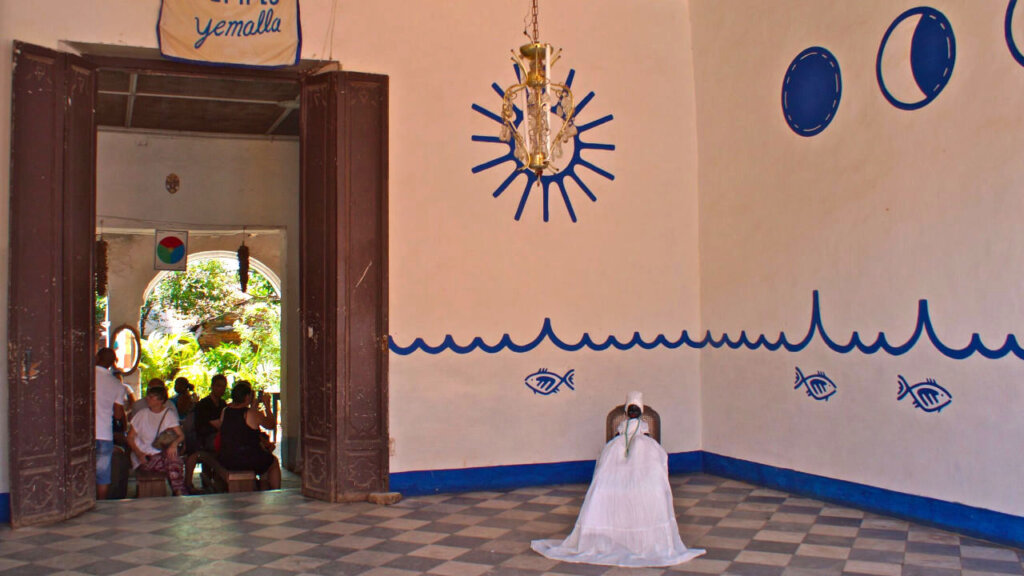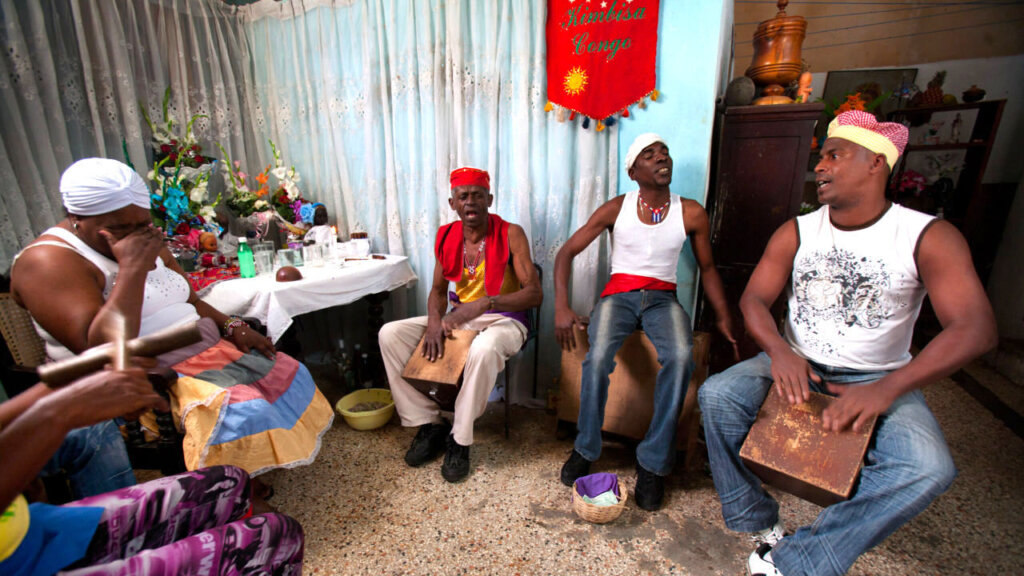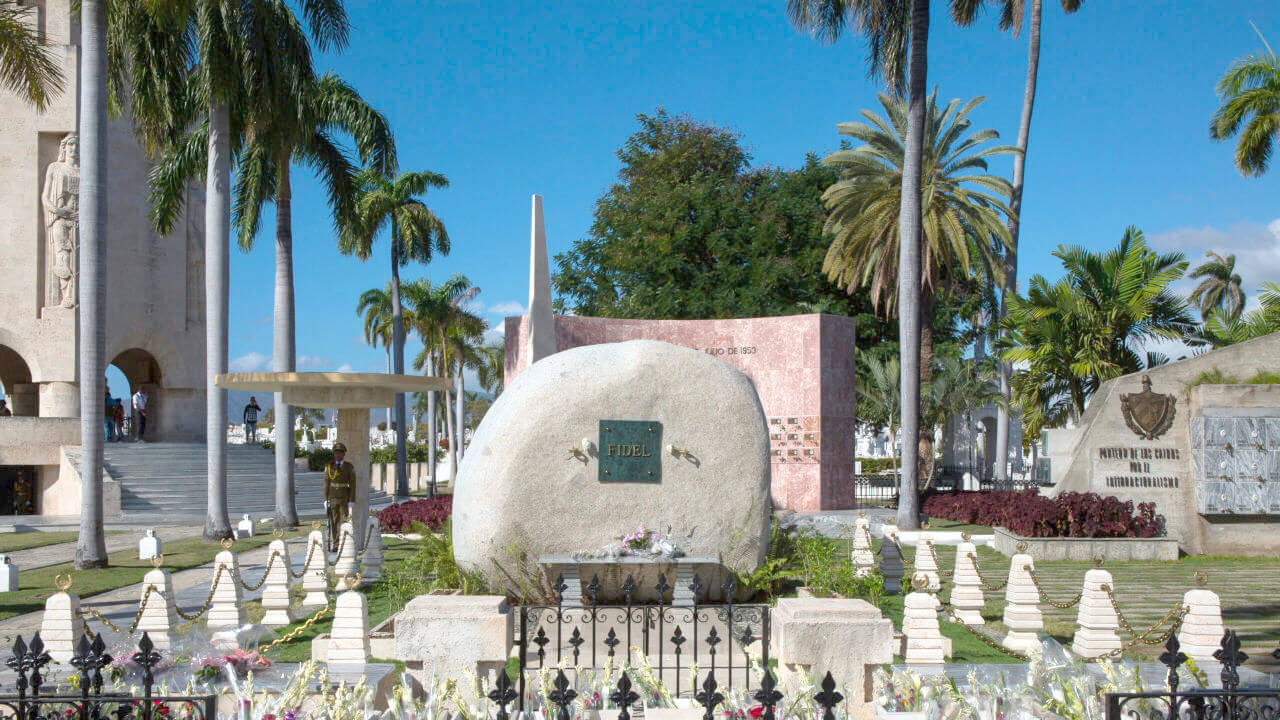
Today we are visiting the particularly interesting island of Cuba, located in the Northern Caribbean sea. Cuban funeral rituals and perceptions of death are fascinating due to their connection to Santería. This sometimes also includes the sacrifice of animals. At the same time, the socialist history of Cuba is still influencing modern funerals on the island. Today we are finding out more about syncretism, Santería and socialist funerals in Cuba!

Firstly, it is worth saying that Santería is a religion has roots in West Africa, and especially the Yoruba people of Nigeria. Secondly, the Yoruba faith reached Cuba through the Spanish slave trade of colonial times. After that it adopted many elements of Roman Catholicism, creating thus Santería. Finally, other names of this religion include Regla de Ocha, Regla Lucumí, or simply Lucumí.
Furthemore, during the Ten Years War most Cubans had to grieve the loss of a loved one, at some point. As a result, white Cubans also turned to spiritism or Espiritismo. After that, beliefs of spiritism gradually obtained a more creolized version. In turn this gave birth to Santería in its current form.
However, the Roman Catholic Church originally condemned Santería. Additionally, it supported for hundreds of years that it is a heretic practice, connecting it to the Devil. The Santería, though, kept evolving in Cuba from the 16th to the 19th century. Cuba also achieved independence from Spain in the beginning of the 20th century. As a result, the presence of Catholicism reduced as well.
Finally, the two religions coexist relatively peacefully today. Nowadays, Santería is also a way for many Afro-Cubans to remain in touch with their roots. However, some Cubans support that the current version of Santería is based on slavery. They choose, therefore, to practice the older version of the Afro-Cuban religion.
Before we explore funeral rites in Cuba, it is important that we understand what syncretism is. For example, the Yoruba faith revolved around deities called oricha. These deities eventually became one and the same with Catholic saints. Additionally, the priests and priestesses of Santería, are known as santero or santera. However, Catholic priests are also important for Cubans. That is so because every follower of Santería has to be baptized as a Roman Catholic. Lastly, Santería also uses Christian symbols.
Those are just some examples of syncretism, or in other words the merge of two distinct religions into one. Santería’s approach to death consists of multiple beliefs as well. According to these, funeral rites (called ‘itulu’) aim to calm the spirit of the dead. Finally, the official death rites are Catholic and take place in a chapel.

The first year after someone’s death is a period of mourning for the family. During this time the family performs additional rites that are not always Catholic. These rites also help the soul of the dead with its journey to the afterlife. Finally, the mourning period ends with a rite called the breaking of the plates (‘levantamiento de platos’).
Additionally, another important ritual is the ‘Tambor para según’. This is a drum ceremony that honors of the spirits of the dead. We should also mention here the ‘Cajon de Muertos’ ceremony. In short, this ritual brings good fortune while banishing bad luck and maleficent energy.
The socialist history of Cuba is well-known with famous figures such as Fidel Castro and Che Guevara. A less-known fact though might be that during strict socialism, practicing a religion openly was not common in Cuba. However, the fall of the Soviet Union led to more relaxed approaches towards religion in Cuba too.
Additionally, due to strict socialist practices, atheism remains to this day quite present in Cuba. At the same time though, the majority of Cubans have reportedly practiced Santería in some way or extent. Therefore, contemporary funerals in Cuba are almost always both a bit religious and a bit socialist.
Technically speaking, secular funerals are more prevalent than heavily religious ones. Moreover, funerals are usually state-funded, so they tend to be simple and cheap. For instance, coffins are sometimes not very firm. Therefore, the pallbearers need to be careful when carrying them. Additionally, most funerals do not last a long time and take place in most cases within 24 hours after death. This is so because almost no funeral home has access to refrigeration. Therefore, the deceased need to be interred as soon as possible after death.

Notable exceptions are funerals for foreigners or important individuals. Additionally, the government has organized extravagant funerals for people significant to the socialist cause. For instance, after the death of Fidel Castro in November 2016, his body was kept refrigerated. After that, the family cremated Castro in a private ceremony. Cremation is not usual in Cuba and is often reserved for special occasions. The casket also became available for the public to pay its respects.
As a sign of honor, there was a parade for the casket of Castro’s remain. This procession took four days and traveled over 900 kilometers. Additionally, it followed the reverse route that Castro took during his Freedom Caravan. The Freedom Caravan is Castro’s victory march of 1959. Finally, rallies also took place as public memorial events.

As mentioned above, the average Cuban funeral is usually a simple affair. The wake carries almost no religious significance, staying true to its socialist background. Here are some interesting characteristics of a Cuban wake:
The burial tends to be more religious than the wake. However, socialist elements are still present during the funeral. A good example of that are the funerals that take place in Colon, the biggest cemetery of Havana:
However, it is important to say that the dead are still important to their relatives. This becomes particularly clear on certain days such as the death anniversary of the person or during Mother’s/ Father’s Day. On these days, close family members visit their deceased relative, clean their grave and offer flowers. Sometimes they even perform Santería rituals at the graveside.
Finally, some Cubans believe that the spirits of their dead relatives may visit them when they sleep, offering them their wisdom.

The COVID-19 pandemic has not hit Cuba as hard as other places in the world. However, families of elderly people often pray to keep their relatives safe. They may also sacrifice doves and roosters and chant in Yoruba.
Additionally, it is common for Santería practitioners to arrange online meetings with fellow practitioners in Cuba. This also happens in other Latin American countries with Santería followers, such as Venezuela. These online rituals aim to protect people since they are performed in isolation at everyone’s house. At the same time, they try to ask for protection or ask for Orichas to stop harvesting souls during the pandemic.
We hope you learned something new regarding this country’s death practices!
If you want learn more about the original Yoruba funeral practices, feel free to check out our Nigeria article! And if you want to read more on similar death practices linked to the Atlantic slave routes, have a look at our Brazilian Candomblé article. Finally, for more on the effect of socialism on funeral practices, check out our article on Russian Funeral Traditions.
The average mixed death rate in Cuba is 8,988 per 1.000 people (2018).
Since most funeral homes cannot refrigerate then dead, burials need to take place as soon as possible after death.
Most Cubans identify as Catholic (around 60%), but only 5% of that attends mass regularly. Additionally, there is a high percentage of atheists (at least 25%), which is connected to 20th century communism.
There is no data regarding utilized donated organs for 2018 or 2019, despite the existence of data on donated organs. According to Grupo Punta Cana, the rate of utilized organs per million population was 10.09 in 2017.